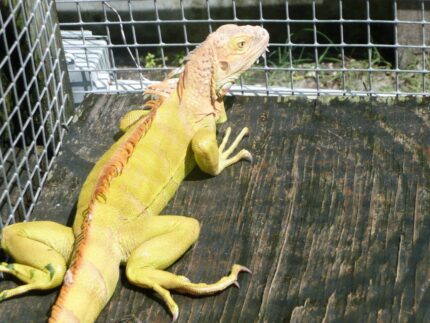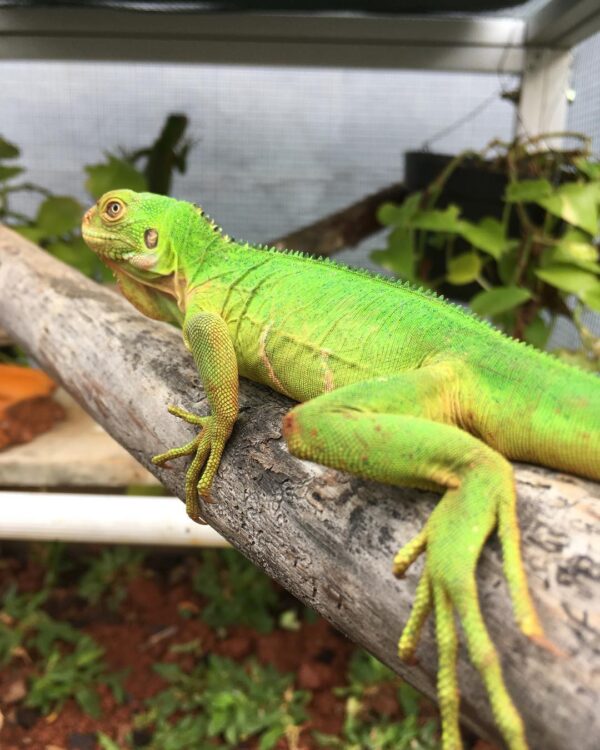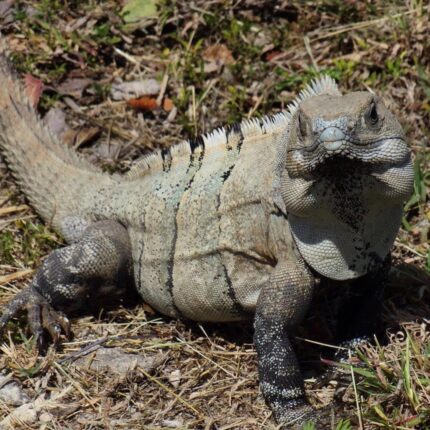Grand Cayman blue iguanas — also called blue iguanas, Cayman Island blue iguanas or Grand Cayman iguanas — are large, heavy-bodied lizards with colors ranging from gray to bright blue. These ground-dwelling reptiles are diurnal and will bask in the sun to warm up at the start of the day. They can be a territorial species, especially with iguanas of the same sex.
The Grand Cayman blue iguana’s skin is dusky-blue to gray with cross bands that are often barely visible. Its coloration provides great camouflage among the rocks and scrub it inhabits. During the mating season, these lizards become a brighter blue.
This species of “rock iguana” can exceed 5 feet (1.5 meters) in length (nose to tail tip) and can weigh more than 25 pounds (11 kilograms). These heavy-bodied lizards are the Grand Cayman’s largest native land vertebrate.
Cayman Island blue iguanas are found only on Grand Cayman Island. They prefer dry, rocky forests in coastal areas, which may contain cactus and other thorny plants. These lizards may also be found in scrub woodlands, semi-deciduous forests and dry-to-subtropical, moist forests. Iguanas are rather adaptable and may be found in man-modified habitats, as well.
These primarily herbivorous lizards eat mostly leaves and stems, as well as fruits and flowers. They have occasionally been observed feeding on fungi, insects, soil and excrement.
At the Smithsonian’s National Zoo, these lizards eat leafy green vegetables, carrots, sweet potatoes and herbivorous lizard pellets.
Grand Cayman iguanas are sexually mature between 4 and 9 years of age. The breeding season takes place from April to June and seems to be triggered by the onset of the spring season. After copulation, the female becomes very territorial and aggressive.
She digs a nest cavity at least 1 foot deep in the sand and lays heir eggs between late June and August. After depositing up to 20 eggs, she covers them with soil. The eggs incubate at a temperature of about 86 to 91 degrees Fahrenheit (30 to 33 degrees Celsius), and the babies hatch 60 to 90 days later. The hatchlings are vulnerable to predation and have a high mortality rate.
Blue iguanas appear to be a long-lived species, generally surviving for 25 to 40 years in the wild. One male in human care in the U.S. lived to be at least 69 years old.
FUN FACTS
- These heavy-bodied lizards are the Grand Cayman’s largest native land vertebrate.
- This species of “rock iguana” can exceed 5 feet (1.5 meters) in length (nose to tail tip) and weigh more than 25 pounds (11 kilograms).













Reviews
There are no reviews yet.